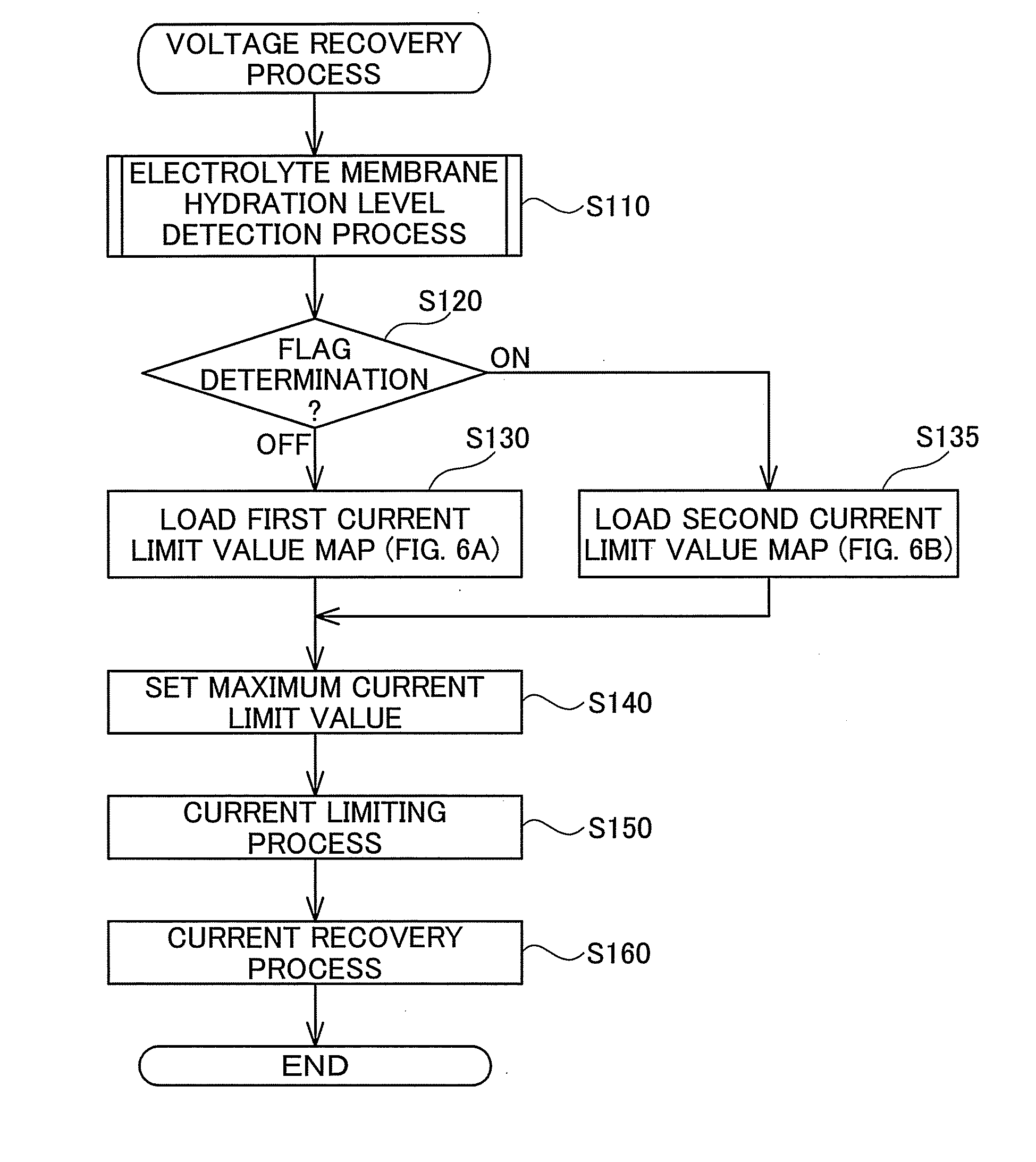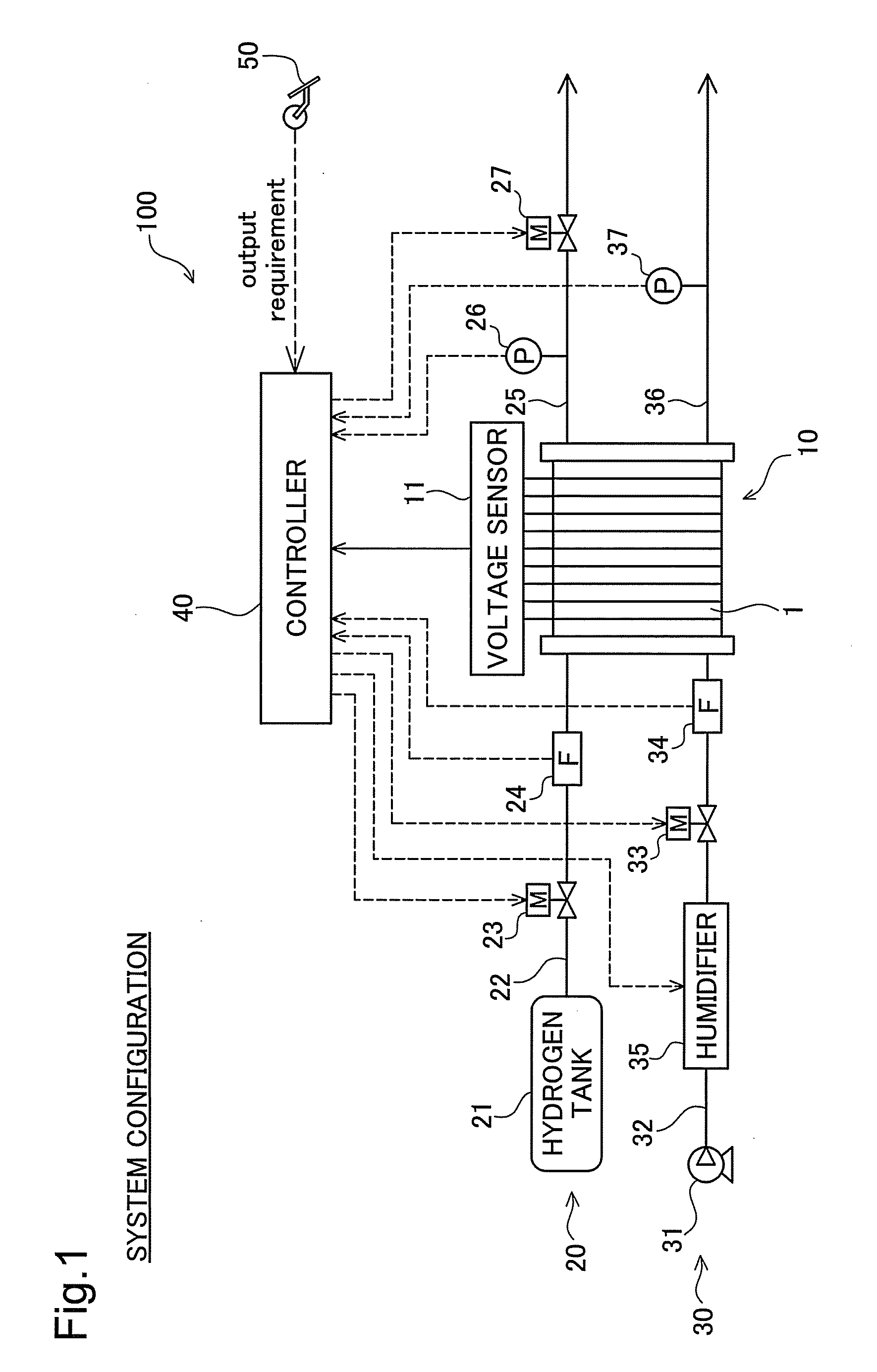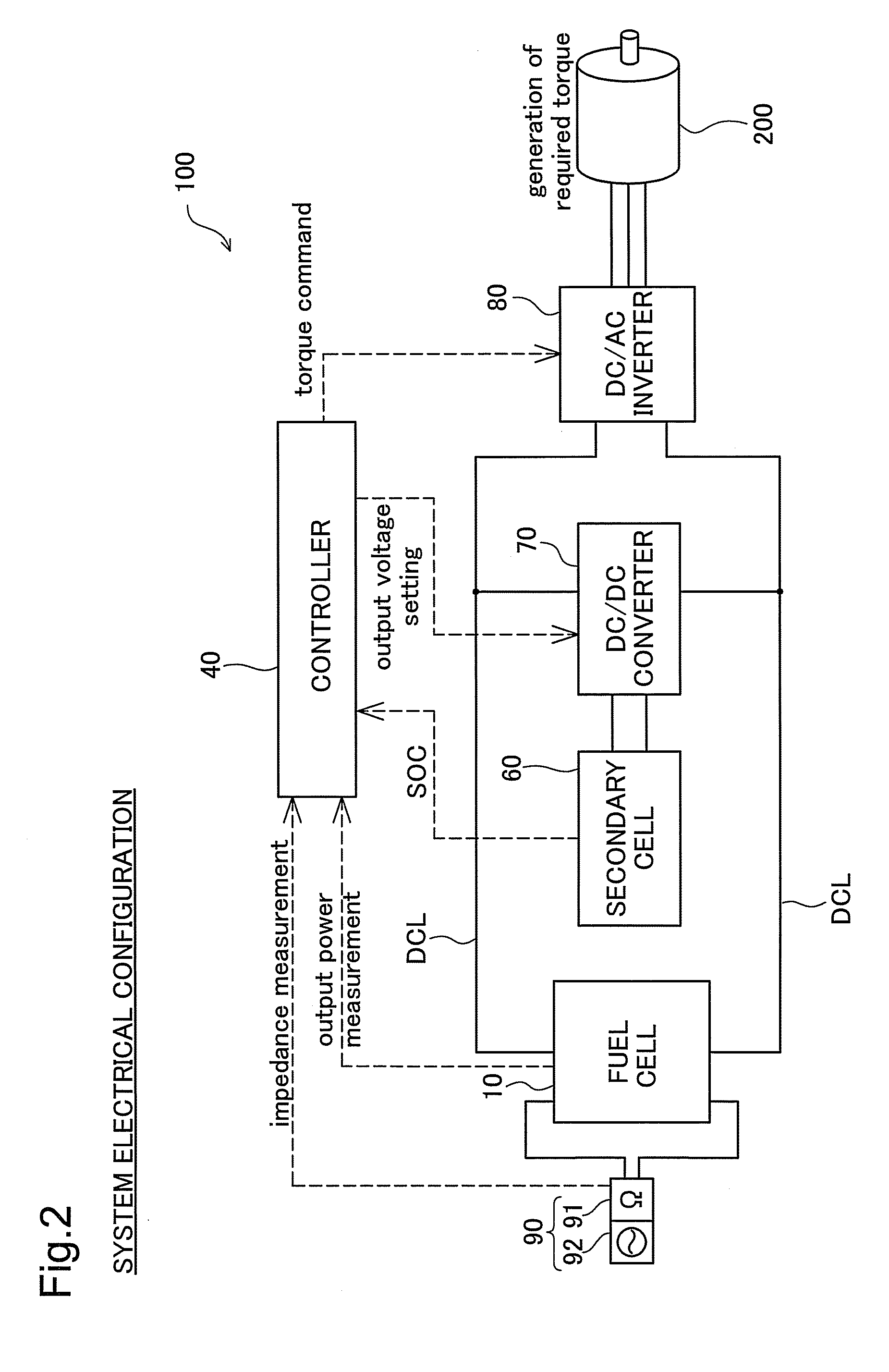Fuel cell system and method of controlling the same
a fuel cell and system technology, applied in the field of fuel cell systems, can solve the problems of degradation of the electrolyte membrane, insufficient measures to address this problem, and inability to meet the needs of the electric power generation system, so as to achieve the effect of suppressing the degradation of the fuel cell and increasing the impedance of the fuel cell
- Summary
- Abstract
- Description
- Claims
- Application Information
AI Technical Summary
Benefits of technology
Problems solved by technology
Method used
Image
Examples
embodiment 1
A. Embodiment 1
[0024]FIG. 1 is a schematic diagram depicting a configuration of a fuel cell system according to one embodiment of the present invention. This fuel cell system 100 includes a fuel cell stack 10, a hydrogen supply system 20 and an air supply system 30 which are connected to the fuel cell stack 10, and a controller 40.
[0025]The fuel cell stack 10 is a solid polymer fuel cell that is supplied with hydrogen and oxygen, and generates electrical current through an electrochemical reaction between these reactant gases. However, the fuel cell stack 10 need not necessarily be a solid polymer fuel cell, it being possible to implement the invention in any of various kinds of fuel cell.
[0026]The fuel cell stack 10 has a stack structure including a plurality of unit cells 1 each having a power generating element with an electrolyte membrane sandwiched by electrodes. The fuel cell stack 10 is also furnished with a voltage sensor 11 that is adapted to measure potential in each indiv...
modified embodiment 1
B1. Modified Embodiment 1
[0066]In the preceding embodiment, the controller 40 measures the voltage of each individual unit cell 1 and decides to execute the current recovery process depending on these measurements; however, voltage need not be measured for each individual unit cell 1. The current recovery process may instead take place at prescribed timing on an ongoing basis, for example.
embodiment 2
B2. Modified Embodiment 2
[0067]In the preceding embodiment, by switching between first and second current limit value maps MP1, MP2 according to the Dry flag, the threshold value for the minimum cell voltage (Vm2, Vm4) changes so that if the Dry flag is “ON”, the current limiting process will be triggered under more lenient conditions. However, the condition for triggering the current limiting process need not be set through minimum cell voltage. For example, the current limiting process may be triggered when the extent of increase in FC required power meets or exceeds a certain threshold value. In this case, the controller 40 will progressively lower the threshold value in association with lower hydration levels inside the fuel cell, so that the current limiting process will be triggered under more lenient conditions.
PUM
 Login to View More
Login to View More Abstract
Description
Claims
Application Information
 Login to View More
Login to View More - R&D
- Intellectual Property
- Life Sciences
- Materials
- Tech Scout
- Unparalleled Data Quality
- Higher Quality Content
- 60% Fewer Hallucinations
Browse by: Latest US Patents, China's latest patents, Technical Efficacy Thesaurus, Application Domain, Technology Topic, Popular Technical Reports.
© 2025 PatSnap. All rights reserved.Legal|Privacy policy|Modern Slavery Act Transparency Statement|Sitemap|About US| Contact US: help@patsnap.com



